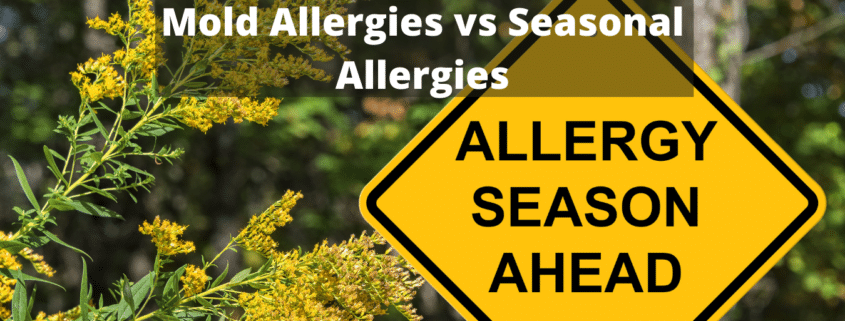You may blame pollen and seasonal allergies for your sneezing, watery eyes, runny nose, and that tickle in your throat. In this blog, we will cover mold allergies vs. seasonal allergies.
However, for many allergy sufferers, mold may be playing a bigger role than you realize.
Now that temperatures have warmed up, people are finding that mold is growing inside their walls and ceilings where the leak was. In addition to roof leaks, there are a number of sources of household molds that may be causing allergies.
Dr. Mia Finkelston, who treats patients on Live Health Online, shares these 5 surprising facts about mold allergies and how to tell if it may be causing your allergy symptoms:
- Mold grows quickly in the heat and high humidity – this includes wetter environments like the beach, a pile of leaves or damp forests, as well as indoor spaces like your bathroom, basement, or under the kitchen sink.
- A mold allergy can trigger asthma. With symptoms such as coughing, chest tightness, and wheezing.
- Outdoor mold most often causes allergy symptoms from summer through early fall, while indoor mold may cause symptoms year-round.
- Some people have a delayed reaction to mold, which means symptoms such as congestion or asthma may get worse over time.
- Most homes have some level of mold in the air – even if you can’t see it — which can cause allergy symptoms.
If you’re considering taking allergy medicine, now is the best time to get a free estimate from Mold Zero LLC to make sure you don’t have mold in your home.
Based on Mold Zero LLC’s free visual evaluation and testing results, this will help determine if your physical symptoms are truly mold allergies as opposed to seasonal allergies.
To schedule your free in home evaluation, contact us at https://www.moldzero.com/contact-us/.




Leave a Reply
Want to join the discussion?Feel free to contribute!